Did you know you could visit a museum exhibition from home? Find out all about it in the successful application of NavVis VLX in Fujian Province, China!
Digital tourism
Digital tourism has become an essential part of urban tourism development in China, helping to build tourist information construction through digital technologies. One major component of this process is the digitization of exhibitions. It allows visitors to browse collections and learn about culture and history online. Digitized exhibitions can also reach a wider audience and enrich learning and educational resources more easily, therefore improving the sustainability and accessibility of exhibitions.
Challenges
The traditional method of digitizing exhibition halls is mainly photographing the site. However, this method usually does not provide sufficient details and has a poor effect. It is also time-consuming, making it hard to capture exhibition halls with large collections in a limited time. This poses a demand for digitization equipment with high speed and efficiency.
Tackling the challenges with NavVis VLX
The wearable mobile scanning technology NavVis VLX breaks down these challenges one by one. In the project of digitizing a city exhibition hall in Fujian, NavVis VLX was used to scan the exhibition hall with high speed and efficiency in a limited time without compromising the data quality.
|
9500㎡ of data captured completed in half a day |
1:1 true-to-size measurement | Realistic and fully colored point cloud model |
360-degree HD panoramic images |
Solutions
NavVis VLX was used to capture the 3D data of the entire exhibition building. The scanned data is then uploaded to and processed automatically in NavVis IVION, the platform where the digital modeling of the exhibition hall is completed by the integrated virtual reality module.
The main steps of implementation are as follows:
On-site capture |
Off-site processing |
|
|
Advantages
- Flexible and portable: NavVis VLX is a wearable device that can be easily carried to different areas in the exhibition hall.
- High-quality image capture: The 20 million pixel images contain a high level of texture detail, which helps preserve the authenticity and visual impact of the exhibits.
- Fast scanning speed: NavVis VLX scans 10 times faster than a TLS and captures the exhibits in a short period of time, significantly saving time and labor costs.
- Ease of data processing and management: Using NavVis IVION Processing for data processing and management, data can be easily organized, marked, stored, and shared.
The results
In this project, both internal and external data collection and processing are completed by one person, which took three and a half days, including half a day for external data collection and three days for internal processing. NavVis VLX was able to deliver 9500㎡ of high-definition panoramic images and a realistic and fully-colored point cloud of the exhibition, making the 3D visualization of the city exhibition hall come to life.
Highlight features
- 20 million pixel-HD panoramic images for detailed views
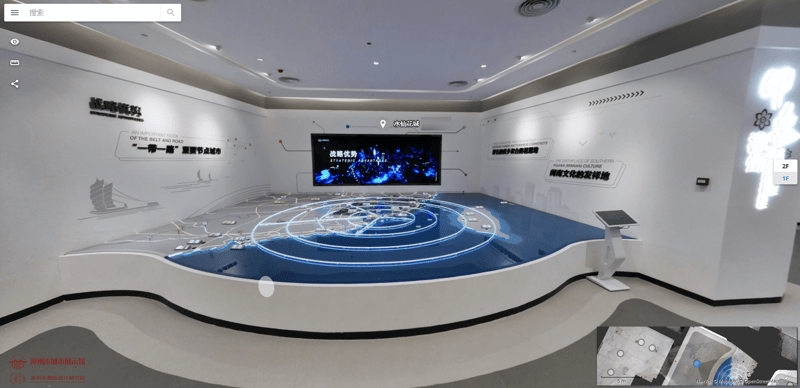
- Points of interest can be used to add text, pictures, promotional videos, and other materials for historical exhibits and enrich the museum’s online content
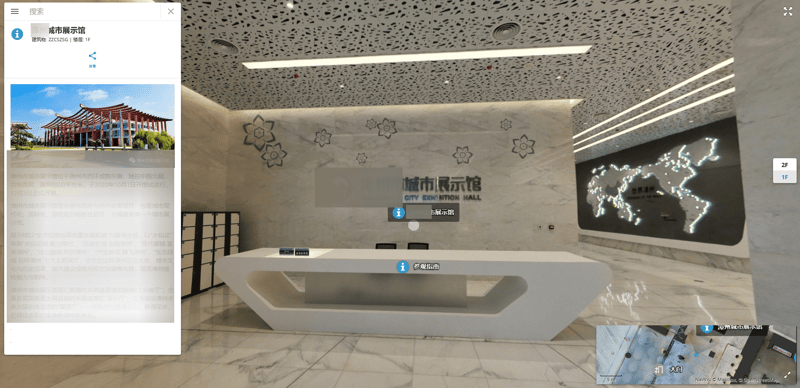
- Quickly search for exhibits and locations of interest and swiftly change to the exhibit view
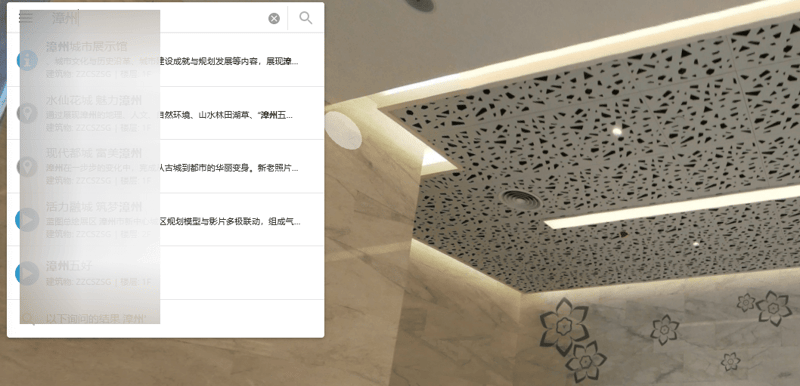
- Share points of interest with a link generated through the sharing function
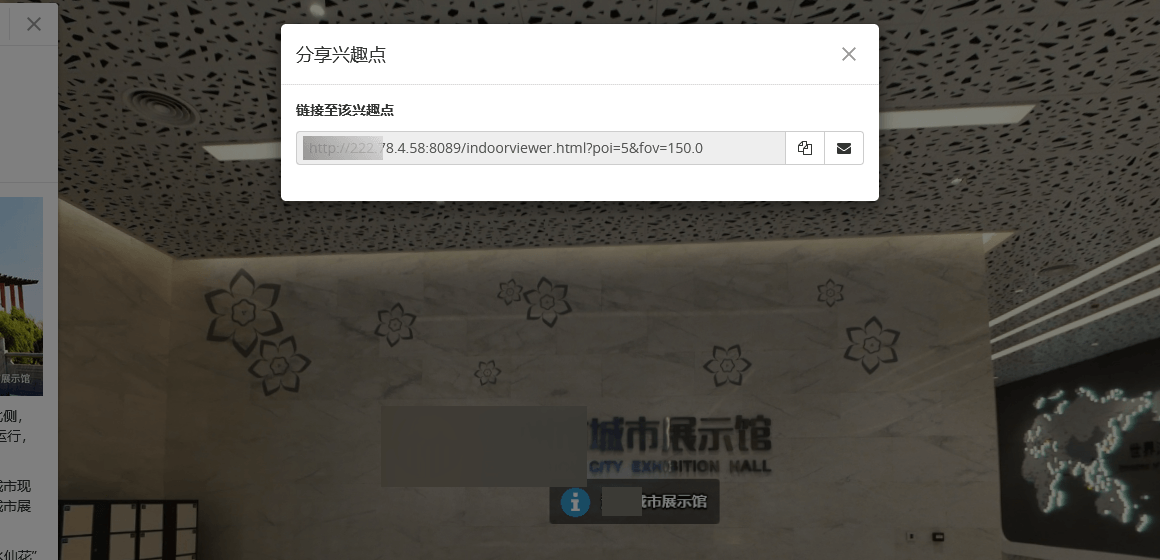
- Using the route planning function in online museums, you can plan your visit to a museum in advance and find out the visiting order by browsing the routes online
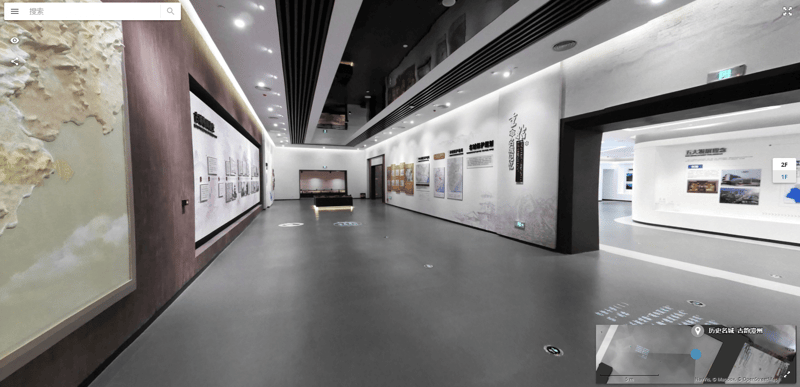
Value increased by using NavVis VLX
We also tested NavVis VLX and TLS in a 20m x 30m exhibition hall and compared the efficiency of the two devices with the following results:
NavVis VLX |
TLS |
|
|
As we can see from above, NavVis VLX improves the efficiency of the scanning workflow by more than 10 times compared to TLS while ensuring centimeter-level accuracy, dramatically reducing manual effort in the data acquisition process.
In addition, combining NavVis VLX with NavVis IVION offers several benefits:
- Extended audience: Since the digital representation of the exhibition hall in Fujian was published online in early 2021, it has reached a total of 100,000+ visits. Through the 3D representation, visitors can browse exhibitions and learn about local history and culture on the Internet, wherever they are.
- Sustainability and accessibility: As-is documentation was made available for the two exhibitions to help improve the exhibition content and ensure that the exhibition is sustainable and up to date. The digital museum offers a sustainable exhibition model where digital content can be updated and expanded at any time.
- Enrichment of learning and educational resources: The online exhibitions contain more than thirty audio guides and more than ten video guides for the points of interest, and many other materials. The abundant learning and educational resources, including the exhibit information, documentation, academic research, and educational resources, can be accessed online, facilitating the communication of knowledge and learning.
Digital technology leads the future
As an innovative model of urban tourism development, digital tourism uses innovative technology to create more possibilities for future tourism, allowing us to connect with stories from thousands of miles away without leaving home. With the goal to build better reality, NavVis will continue to play a vital role in this digital revolution by providing cutting-edge solutions for digital transformation.

